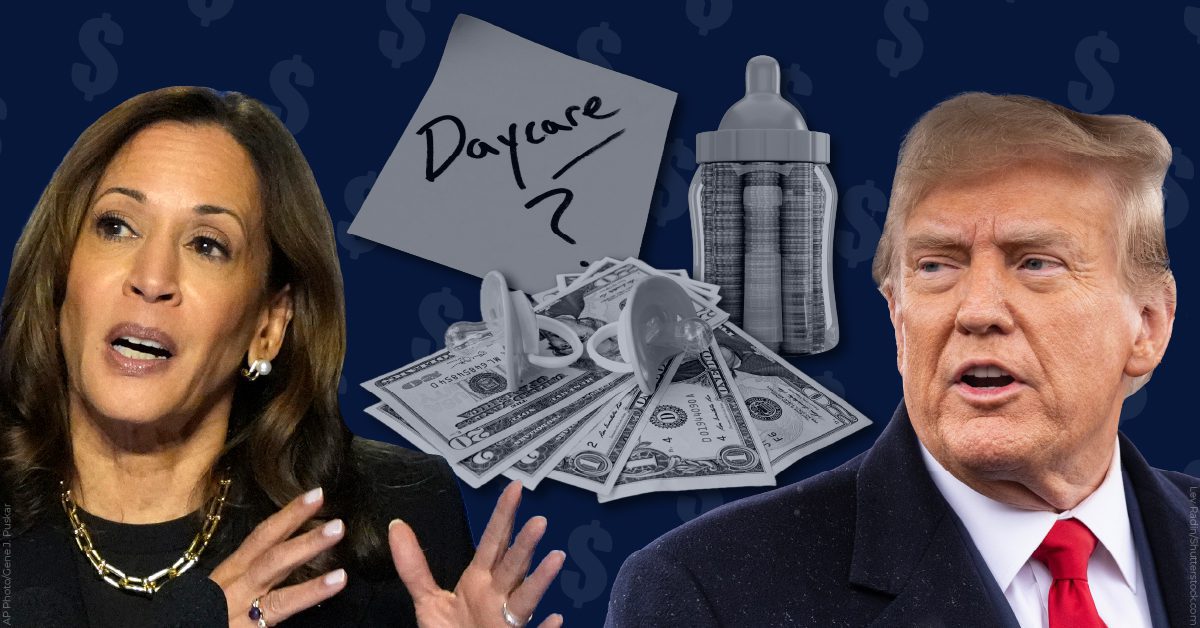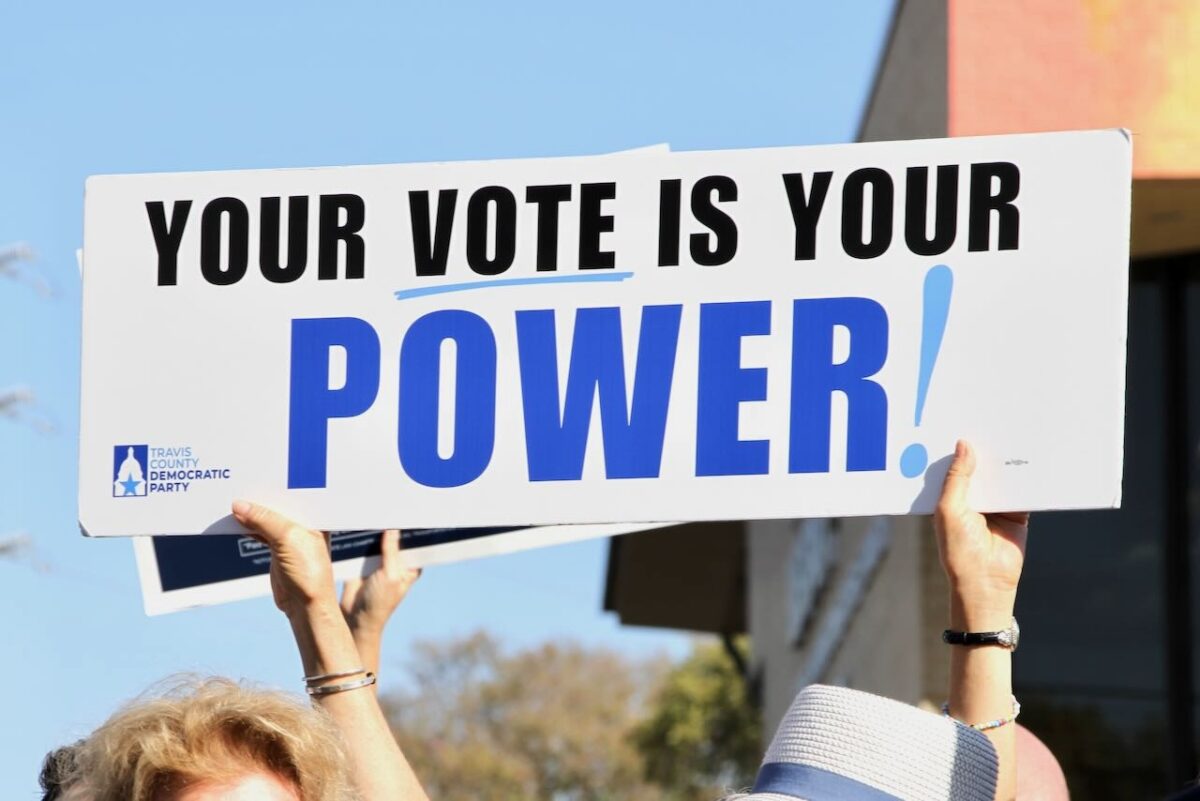
Harris has proposed capping families’ child care costs to 7% of their income and offering families of newborns up to $6,000 in the first year of the child's life. Trump, on the other hand, has focused on tariffs as a solution to the child care crisis, despite evidence showing they would only raise costs for families. (Graphic by Francesca Daly)
Harris has proposed capping families’ child care costs to 7% of their income and offering families of newborns up to $6,000 in the first year of the child’s life. Trump, on the other hand, has focused on tariffs as a solution to the child care crisis, despite evidence showing they would only raise costs for families.
Pop quiz: if you’re the parent of an infant, which of the following would help you better navigate the rising cost of having kids and finding child care for them: up to $6,000 a year in support from the federal government and having child care costs capped at 7% of your income or…tariffs on imported goods?
The first plan is the one proposed by Democratic nominee for president Kamala Harris, who wants to expand the child tax credit from its current threshold of $2,000 annually to provide middle-class and working-class parents with $6,000 in the first year of their child’s life, $3,600 a year when their child is between the ages one and five, and $3,000 a year after they turn six.
A child’s first year is a “vital year of critical development of a child, and the costs can really add up, especially for young parents who need to buy diapers and clothes and a car seat and so much else,” Harris said at a rally in North Carolina last month.
Harris also recently said she’d cap child care costs at 7% of working families’ income.
“My plan is that no family, no working family, should pay more than 7% of their household income in child care,” Harris said at a National Association of Black Journalists event earlier this month.
Harris’ proposal, which echoes a policy Democrats tried to pass during the first year of the Biden administration, was praised by policy experts.
“Vice President Harris understands the profound impact that the child care crisis has on women, families, early educators, and the broader economy. Too often, women face the impossible choice between achieving their full economic potential and meeting child care responsibilities,” Melissa Boteach, vice president of child care and income security at the National Women’s Law Center Action Fund, said in a statement. “The Vice President’s plan to cap child care costs at 7% of income for working families would be transformative, providing much-needed relief to those struggling with the soaring expenses of care.”
The second plan, the one focused on tariffs – or taxes on imported goods – is Donald Trump’s.
During an appearance before the Economic Club of New York earlier this month, the former president was asked if he would “commit to prioritizing legislation to make child care affordable” if he wins in November. Trump responded saying that he plans to increase taxes on imports that “take care” of rising costs, such as child care.
“Child care is child care, it’s something you have to have in this country,” Trump said. “It’s a very important issue. But I think when you talk about the kind of numbers that I’m talking about…child care is child care—you know, you have to have it in this country, you have to have it.”
“But when you talk about those numbers compared to the kind of numbers that I’m talking about by taxing foreign nations at levels that they’re not used to…those numbers are so much bigger than any numbers that we’re talking about, including child care, that it’s going to take care [of it],” he added.
In reality, imposing tariffs on other countries would not bring down child care costs and would actually raise the cost of other items that families need.
The American Action Forum, a conservative think tank, said in a report in June that Trump’s proposed 10% tariff on imports could add an estimated $1,700 to $2,350 in added costs to American households per year.
Trump’s running mate, Ohio Senator JD Vance — who once called universal day care “class war against normal people” — offered another possible solution when asked about how he’d tackle child care costs.
In a discussion with Charlie Kirk, the founder of the right-wing organization Turning Point USA, Vance suggested that one way to “relieve a little bit of pressure” on families is by having family members stay home with children instead of sending them to day care.
“Maybe Grandma or Grandpa wants to help out a little bit more, or maybe there’s an aunt or uncle that wants to help out a little bit more,” he said. “If that happens, you relieve some of the pressure on all the resources that we’re spending on day care.”
While relying on family grandparents may work for some families, millions of other parents live far away from their families or have other barriers to relying on them for care.
Vance has also suggested raising the child tax credit, but when the Senate voted on a bill last month to restore the credit to the $3,600 a year figure parents received in 2021, due to President Biden’s American Rescue Plan, Vance was not present to vote on the measure. Instead, he campaigned in Arizona.













